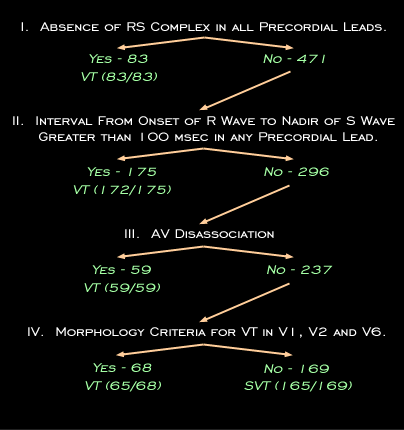Similar anaylsis by others, most notably Kindwall et al (AM J Cardiol 61:1279, 1988) and Akhtar et al (Ann Int Med 109:965, 1988) have established the importance of the clinical setting and the shape and duration of the QRS complex in the diagnosis of ventricular tachycardia. In 1991, Brugada et al (Circulation 83:1649,1991) employed the various established ECG criteria to an analysis of 354 episodes of ventricular tachycardia and 170 episodes of supraventricular tachycardia with aberration, all proven by electrophysiologic studies. The absence of an RS complex in all precordial leads and an interval of more than 100 ms from the onset of the R wave to the nadir of the S wave in any one of the precordial leads proved highly specific for ventricular tachycardia. Their diagnostic employed the four sequential steps shown here and provided a sensitivity and specificity for the diagnosis of ventgriculr tachycardia which exceeded 90%.

